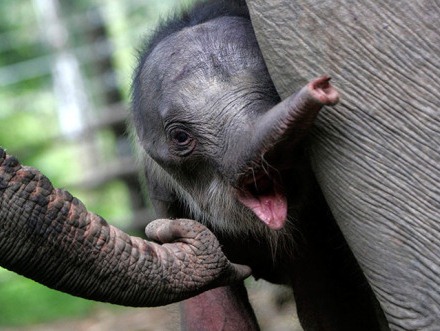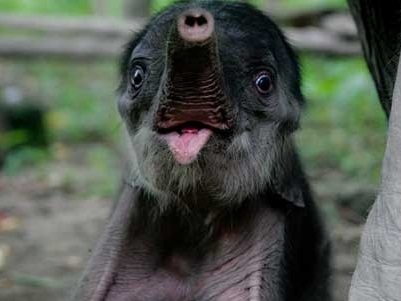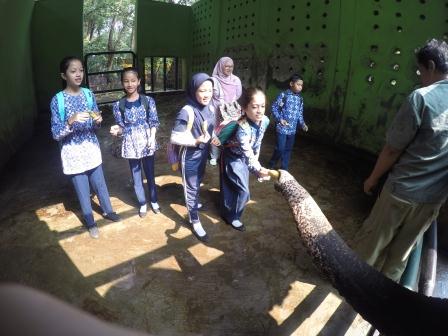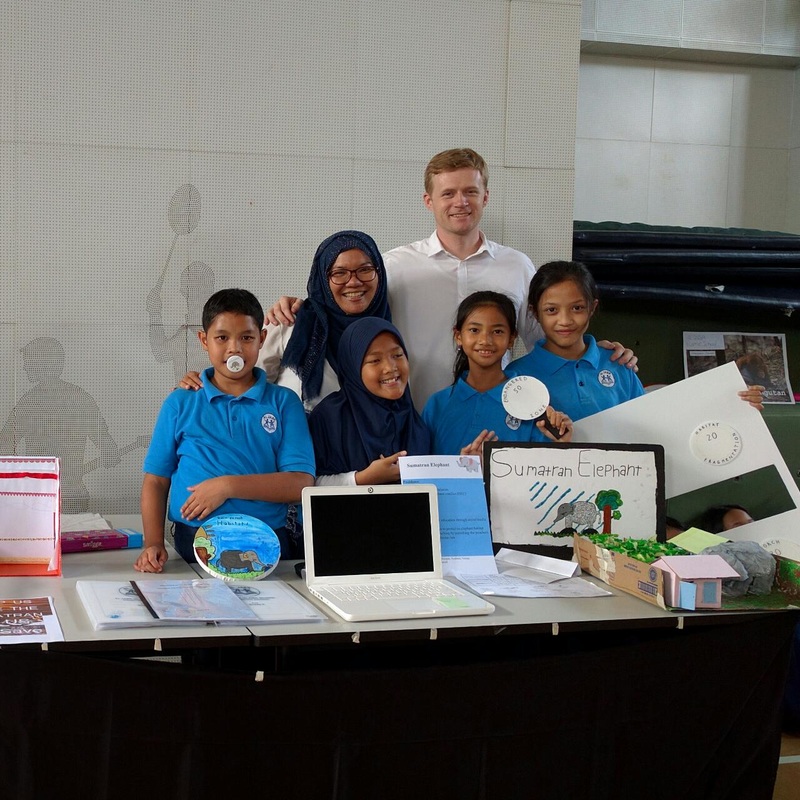Students
Mentors
Sumatran Elephants Facts
WWF Elephant expert: Q & A
|
As part of their research, the students contacted an expert for Sumatra elephants at the World Wildlife Fund (WWF), who is based in Washington, D.C. Her profile on the WWF website can be found here. The expert answered a series of questions we posed that we weren't able to readily find answers for by doing research ourselves. Our 7 questions are listed below with the answers that she gave.
Q: What happens to the bodies of Sumatran elephants after they die from poaching? A: Often, when they are poached, the bodies of the elephants will be buried. Q: Why do some humans choose to hunt Sumatran elephants? A: Sumatran elephants are killed either due to poaching for their tusks (and it’s important to note that in Asian elephants, only males grow tusks, and of those, only a certain percentage of males grow tusks), so males with tusks may be targeted. In addition, elephants are killed as a result of human-elephant conflict (HEC). HEC happens when elephants run out of space and food and come into human inhabited areas either as they move through their historic ranges (which are large) or go in search of food and come into contact with people. These interactions can often be negative and result in loss of crops, livelihoods and often lives. In turn, people retaliate against the elephants and end up killing them. Q: How will Sumatran elephants continue to survive despite poaching? A: It’s important to ensure they have space to live in, first and foremost. Unregulated and illegal deforestation happening in places like Sumatra are leading to elephants losing their habitat, and resulting in their deaths. We need to make sure Sumatra’s remaining forest are kept intact so that elephants and other wildlife have a future. Q: How does training an elephant to do shows for an audience affect their ability to live in the wild? A: When elephants are taken into captivity, they can no longer live like they used to in the wild. They become used to humans and are made to perform tricks for people’s entertainment. The happiest elephant is a wild one, living the way they have always lived. Q: Other than poaching, what are other issues that threaten the survival of Sumatran elephants? A: As I mentioned above, HEC is one of the biggest issues Asian elephants face in the wild. Q: How can we prevent further loss of the Sumatran elephant's habitat? A: By making sure people are aware of what is going on and are not contributing to additional forest loss. Much of the deforestation is resulting due to oil palm plantations – oil palm is found in many foods you eat. You can make conscious decisions to make sure that what you’re consuming on a daily basis isn’t leading to the loss of elephants. Awareness is key, so be informed and inform others of the dire plight of the Sumatran elephant. Each person can make a difference – you can, too, to ensure Sumatran elephants have a bright future ahead of them. 7. Do you have any other resources about the Sumatran elephant that you think would be helpful for us? A: http://www.worldwildlife.org/species/sumatran-elephant |
field trip: taman margasatwa ragunan
|
The students recently went on a field trip to see the Sumatran elephants at Taman Margasatwa Ragunan (Ragunan Zoo). They spent time talking to one of the elephant guides that works at the zoo. They even got a chance to feed the elephants! The students found out that elephants can make very loud noises and can drink from a coconut. We noticed that the male elephants were separated from the female elephants, and we were told that was because the male elephants can be very aggressive. The elephant guide also told us a sad story about how one of the mothers refused to nurse her newborn, so the newborn jumped into a pool of water and drowned. The zoo has a total of 14 elephants and there are three separate enclosure to hold them.
|
eXPERIMENT: seed disbursal
Based on our research, we knew that Sumatran elephants play vital roles in the tropical forest's ecosystem. One of these roles is helping regrow vegetation in the forest through seed disbursement. Elephants walk around forest eating and defecating. There are seeds in their excretions, and their excretion helps stimulate the seeds' growth. We decided to run an experiment to test the seed growth between seeds of the food elephants eat (banana seeds) versus seeds of food humans eat (green bean seeds). In the end, we learned that the green bean seeds grew significantly faster than the banana seeds. However, after the experiment finished, further research showed that bananas do not actually grow from seeds, so our experiment was flawed. The goal of the experiment was to determine whether or not humans could replace elephants as effective seed disbursers by defecating as they walked around tropical forests. The students were unable to come to an effective conclusion because of the flawed experiment model.
Action: social media campaign
|
Because of the big three issues elephants deal with in their lifetimes (e.g. poaching, human-elephant conflict, and habitat degradation), the students a social media campaign to educate people about these pressing issues. They created an informational video that depicts an elephant dealing with these issues and how they react. The video is hosted on YouTube, but the students shared the video through Instagram and Twitter as well.
|
|
Exhibition presentation
|
As a culmination of all the work they've done, the students presented about their topic through a two-day event called the PYP Exhibition. Their presentation included information from their research (including the WWF interview), discoveries from their field trip to Taman Margasatwa Ragunan, the results of their experiment, and the materials for their social media campaign. They also created stickers and buttons revolving around the theme of poaching which stated "save the elephant: one tusk costs a life." The students had several visitors to their booth, and that gave them a chance to explain their project and educate more people about the challenges Sumatran elephants are up against as their numbers in the wild continue to decline and their habitat is becoming increasingly fragmented.
|














